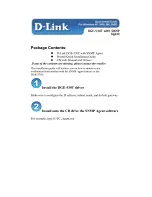
4-3
Cisco Aironet 350 Series Bridge Hardware Installation Guide
OL-1412-01
Chapter 4 Troubleshooting
Checking Basic Settings
Checking Basic Settings
Mismatched basic settings are the most common causes of connectivity problems with wireless clients
and bridge-to-bridge or bridge-to-access point connections. If the bridge does not communicate with
wireless devices, check the following settings.
SSID
Wireless devices attempting to associate with the bridge must use the same SSID as the bridge. The
default SSID is
tsunami
.
WEP Keys
The WEP key you use to transmit data must be set up exactly the same on your bridge and any wireless
devices with which it associates. For example, if you set WEP Key 3 on your wireless LAN adapter to
0987654321 and select it as the transmit key, you must also set WEP Key 3 on the bridge to exactly the
same value.
Refer to the “Security Setup” section in Chapter 3 of the
Cisco Aironet 350 Series Bridge Software
Configuration Guide
for instructions on setting the bridge’s WEP keys.
Operational
Blinking
green
Steady
green
Transmitting/receiving packets over radio.
Steady
green
Blinking
green
Transmitting/receiving packets over
Ethernet.
Blinking
amber
Steady
green
Maximum retries or buffer-full condition
occurred on the radio because it is unable to
transmit all the data packets. The bridge
might be overloaded, or radio reception
might be poor. Contact technical support
for assistance if necessary.
Error/warning
Steady
green
Blinking
amber
Transmit/receive errors. Contact technical
support for assistance if necessary.
Blinking
amber
General warning.
Failure
Steady
red
Steady
red
Steady red
Firmware failure; disconnect power from
the unit and reapply power. If the failure
persists, contact technical support for
assistance.
Firmware upgrade
Steady
red
Unit is loading new firmware.
Table 4-1
Top Panel Indicator Signals (continued)
Message Type
Radio
Indicator
Status
Indicator
Ethernet
Indicator
Meaning
















































